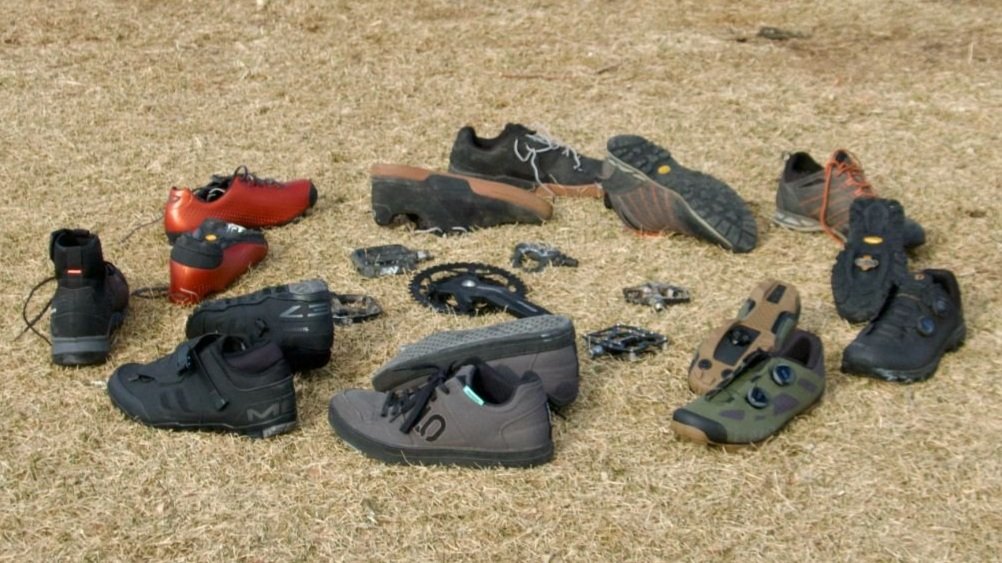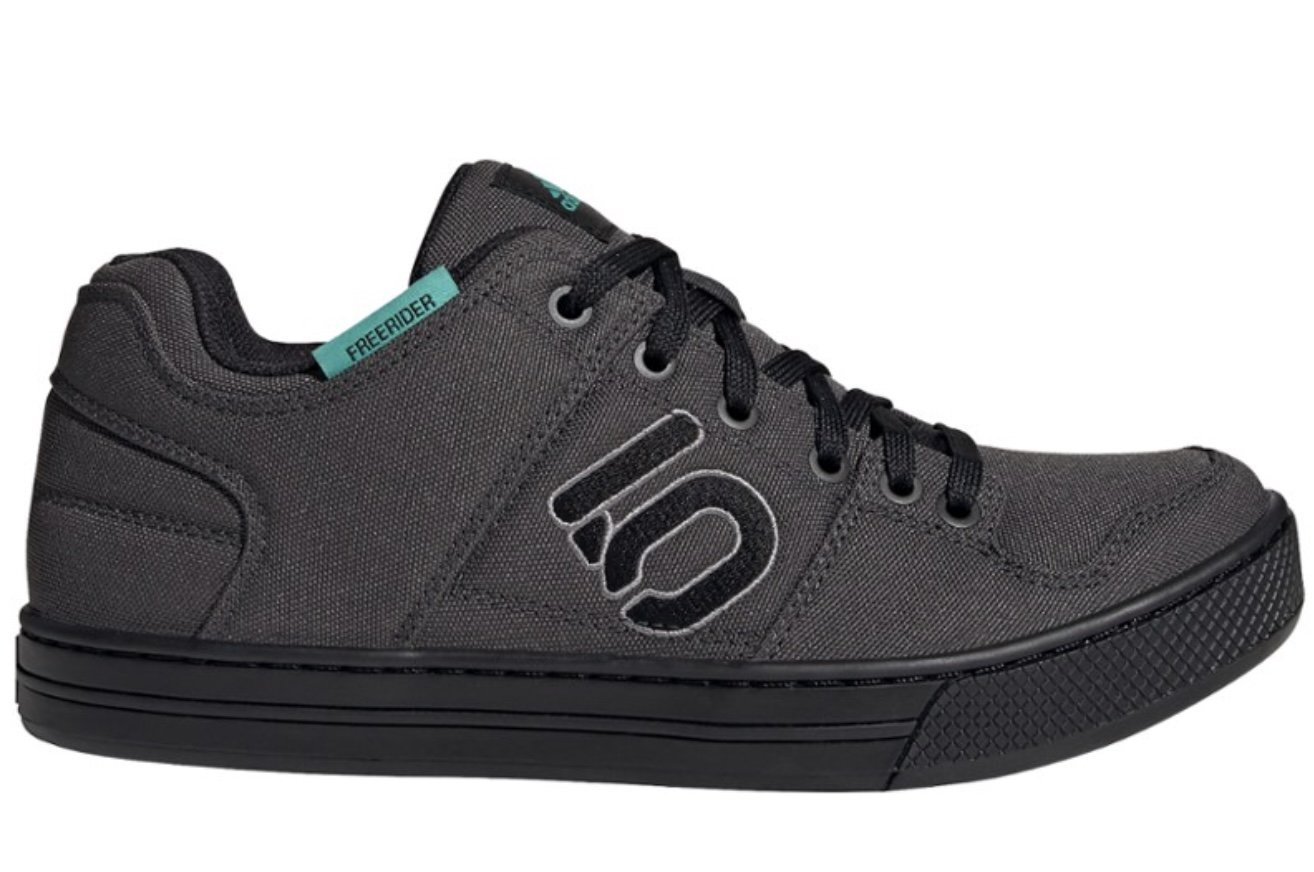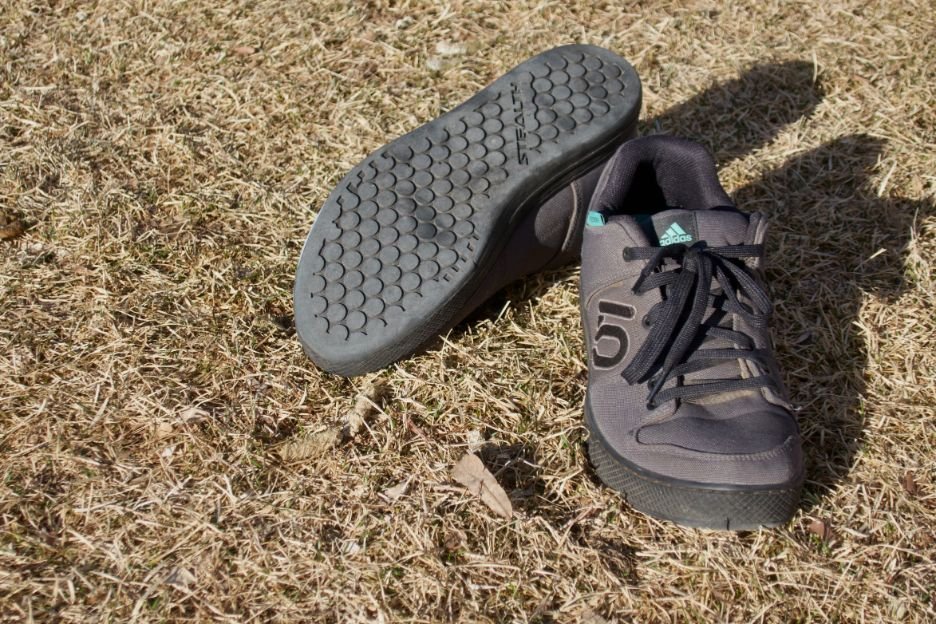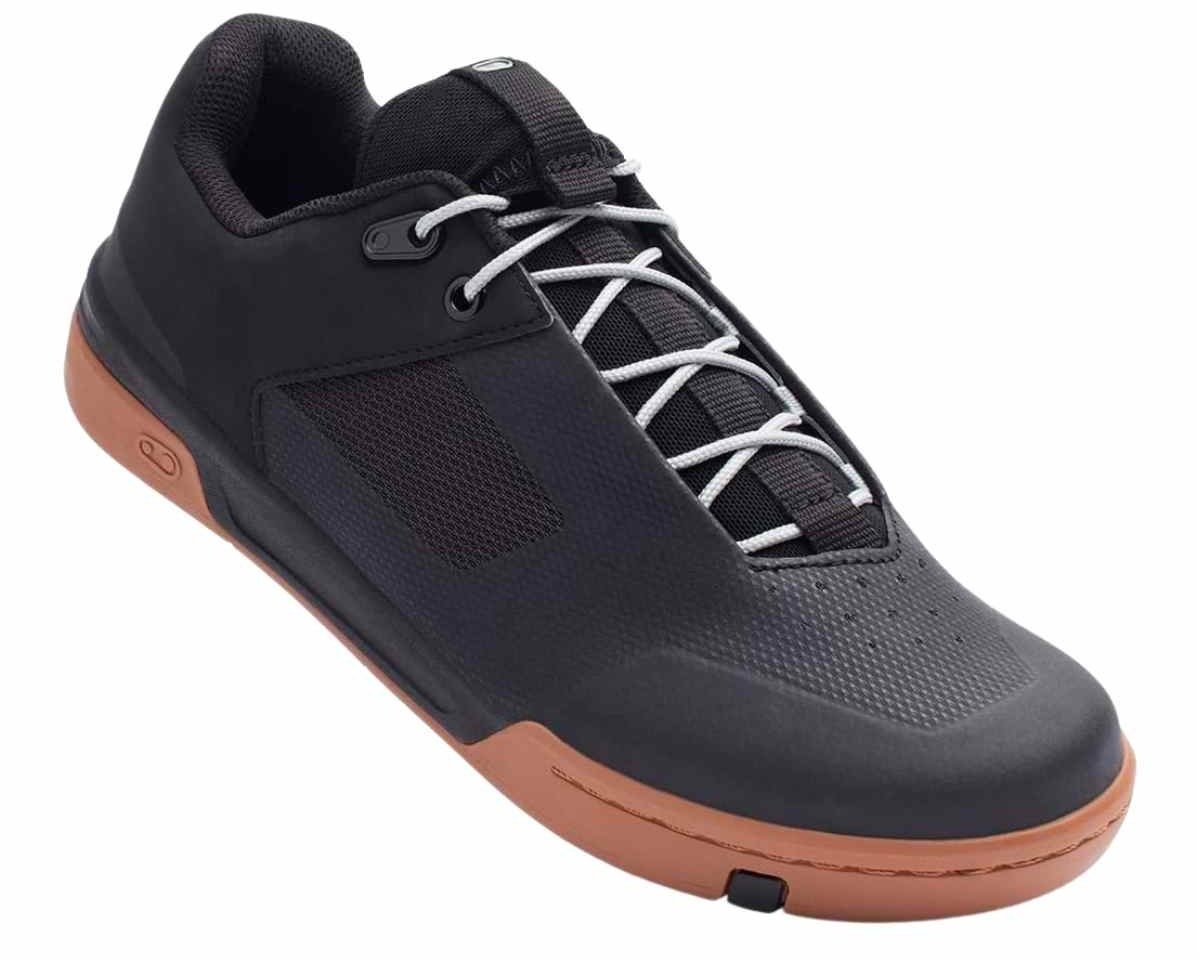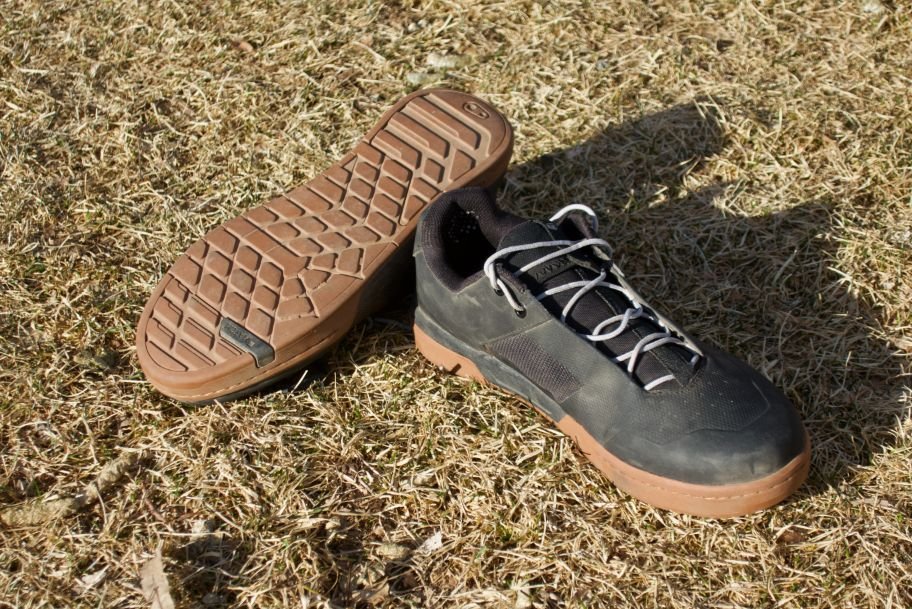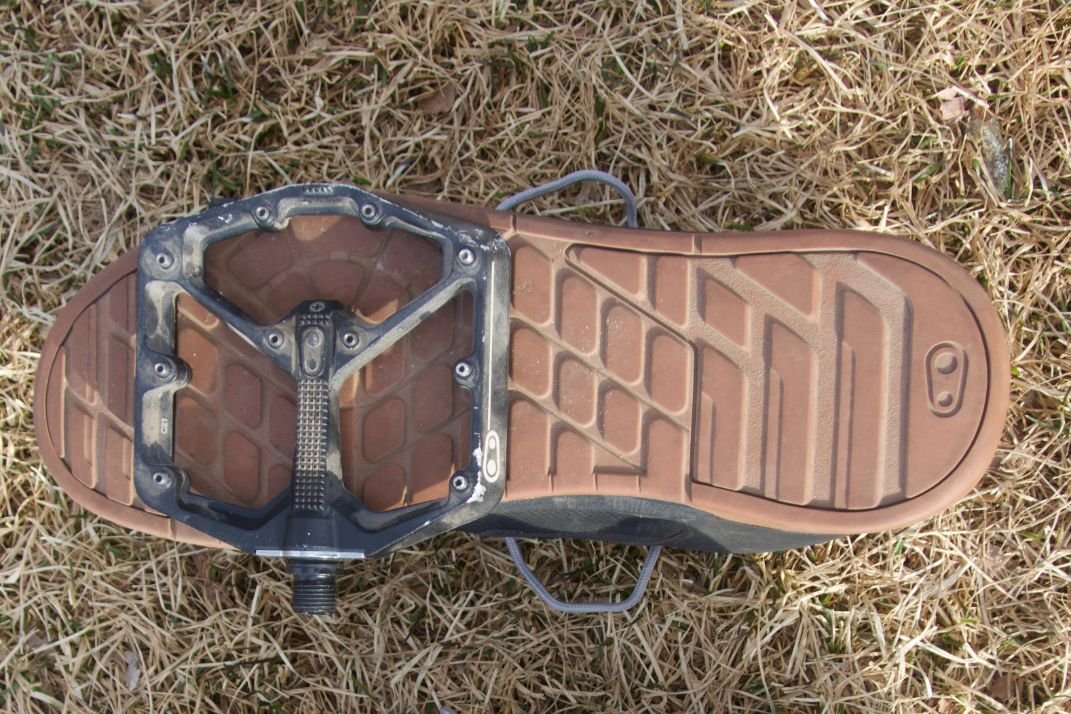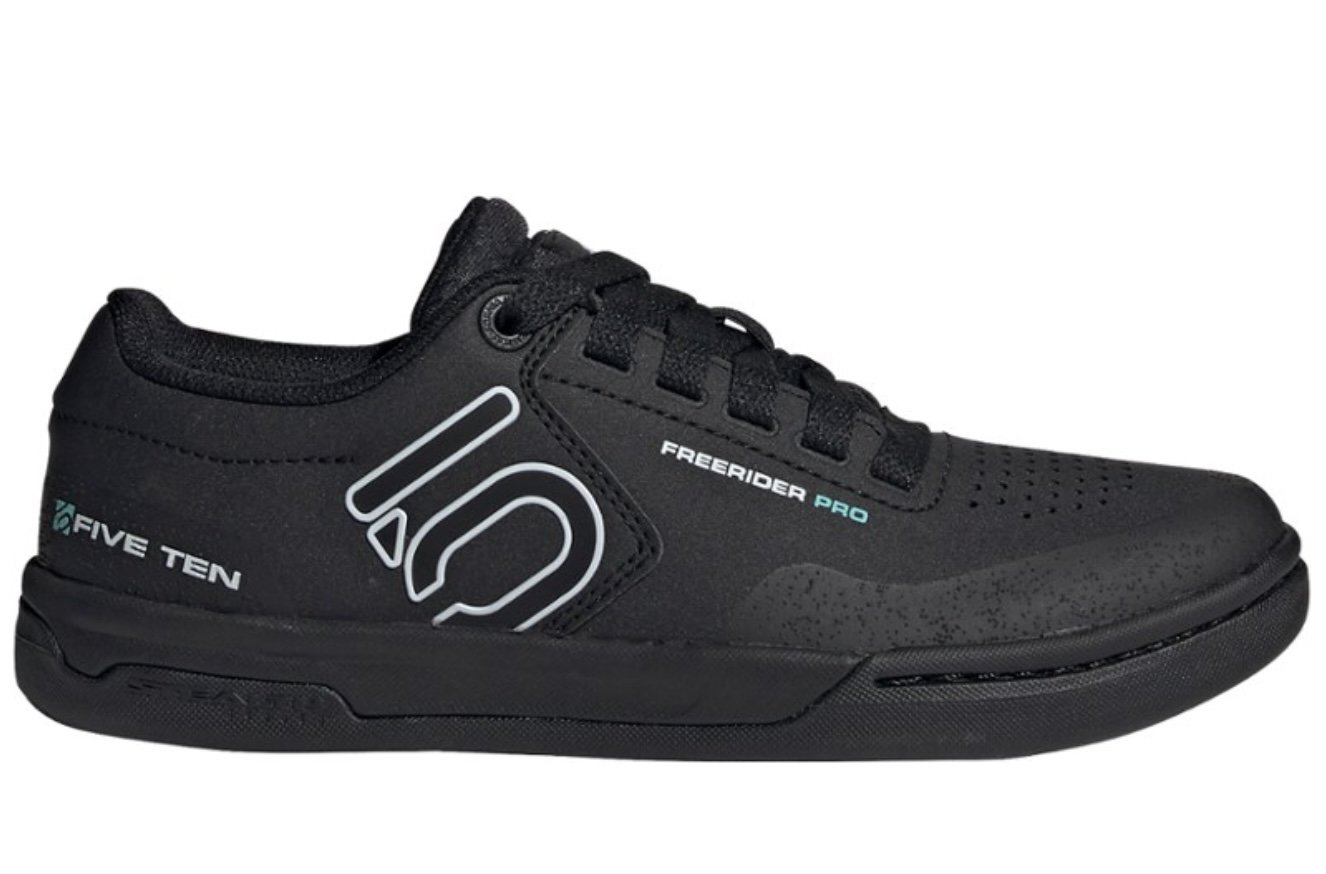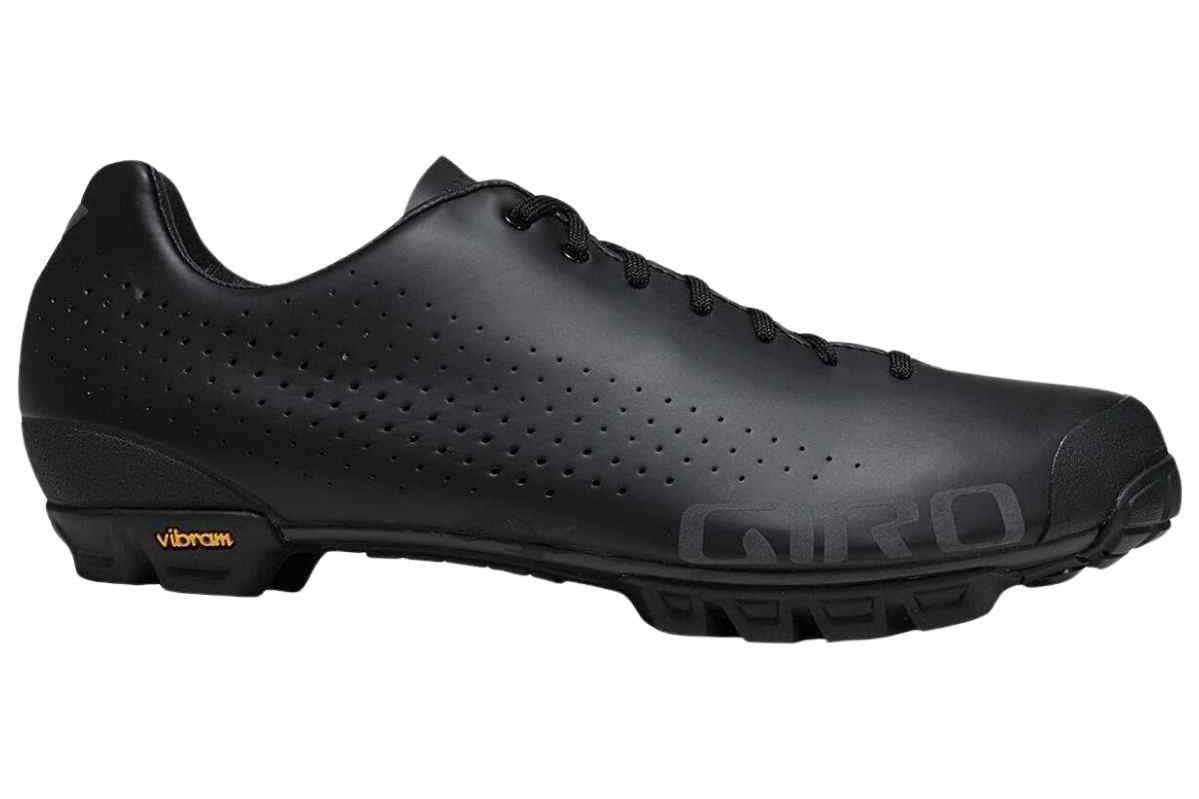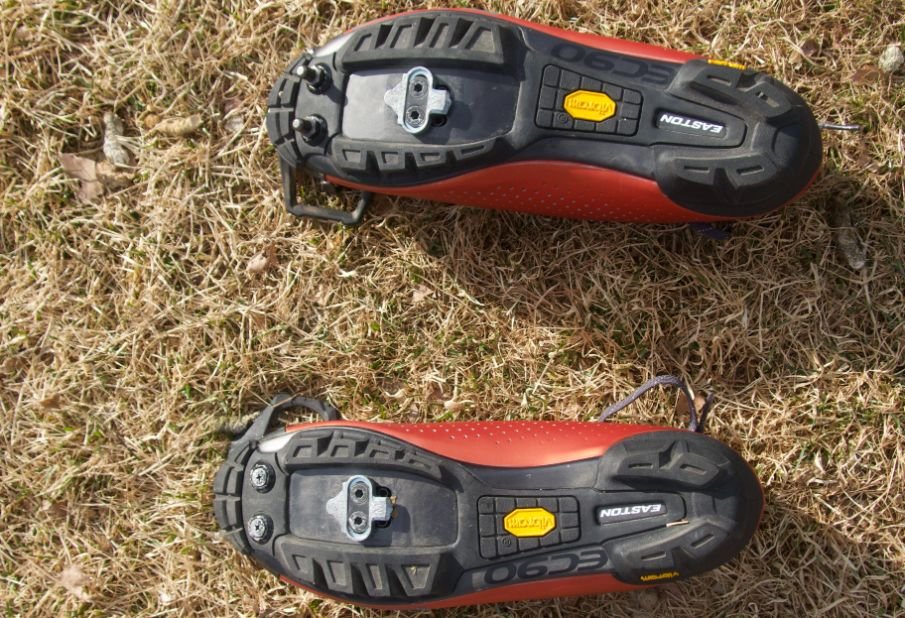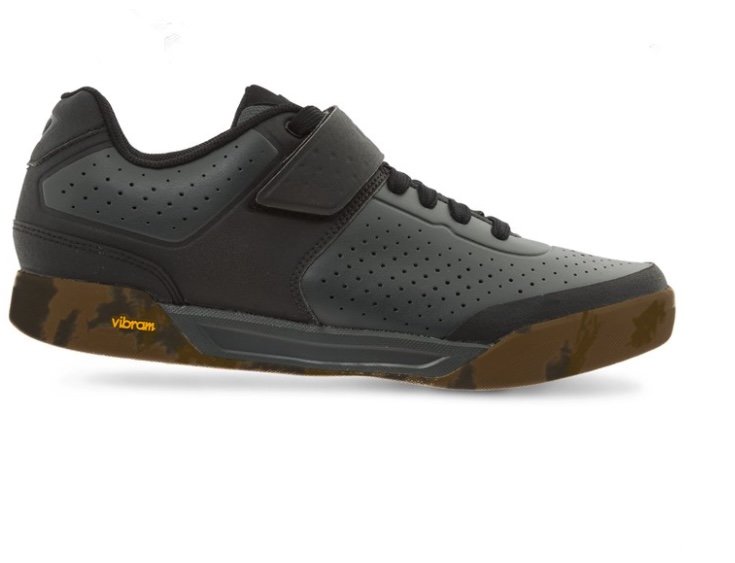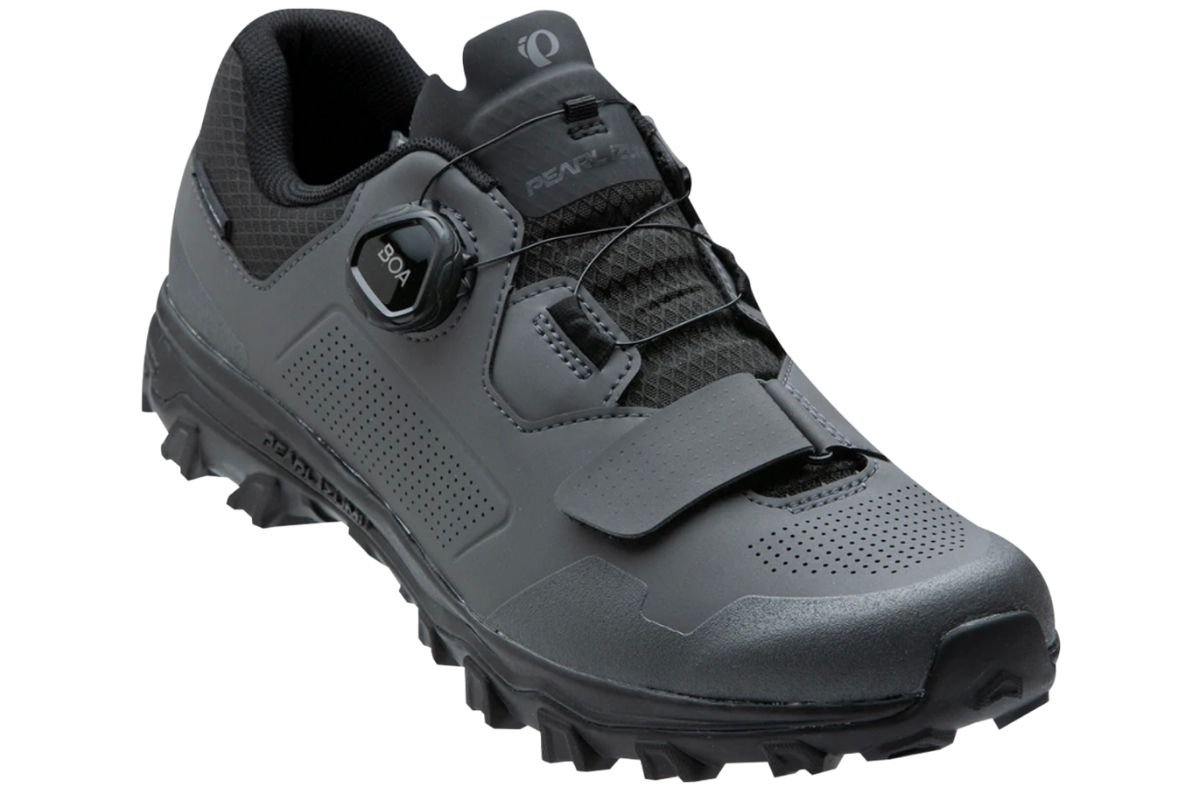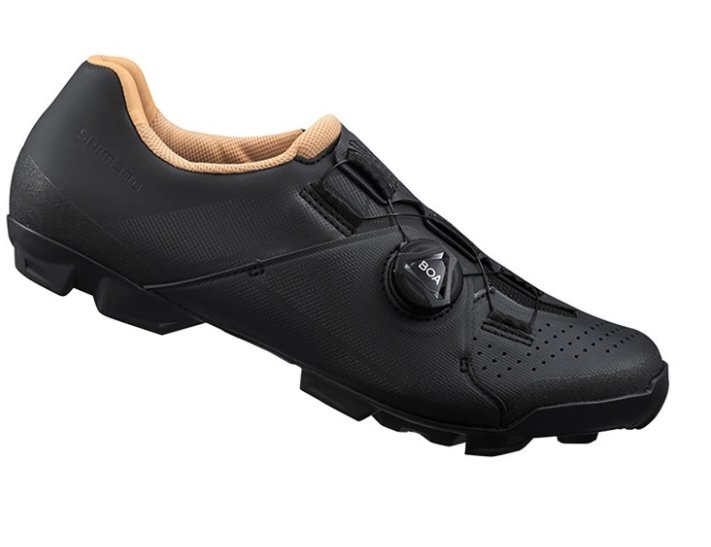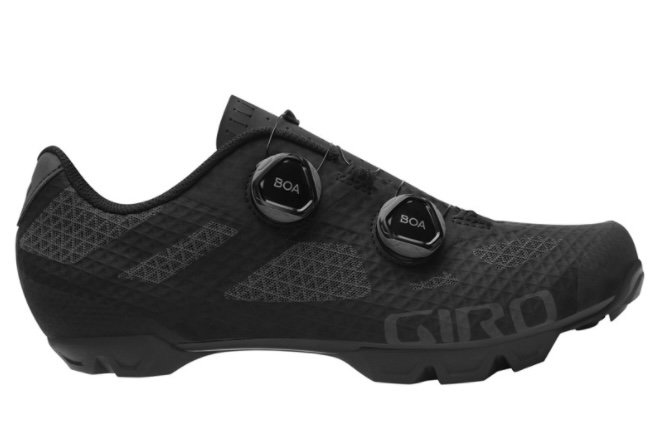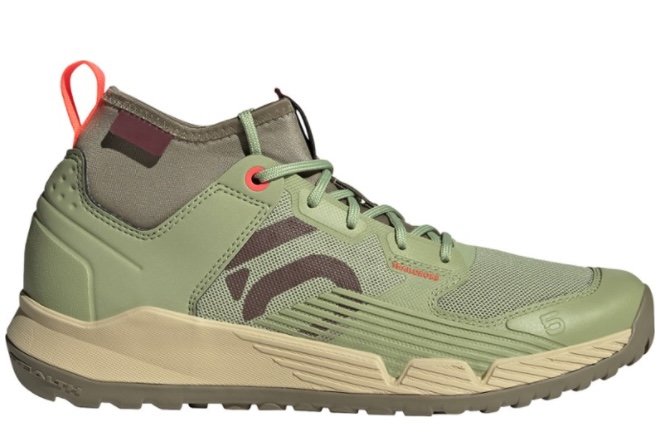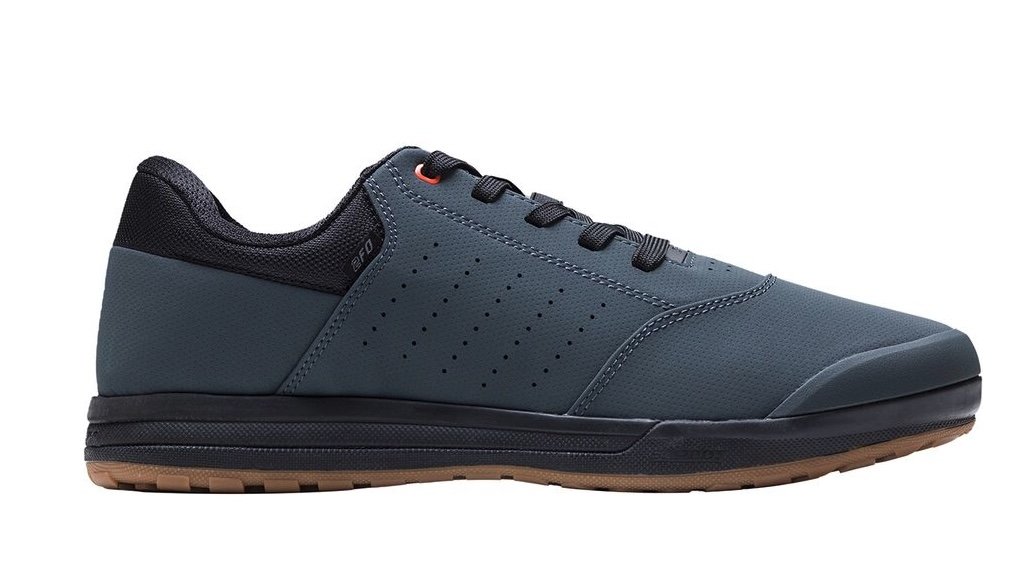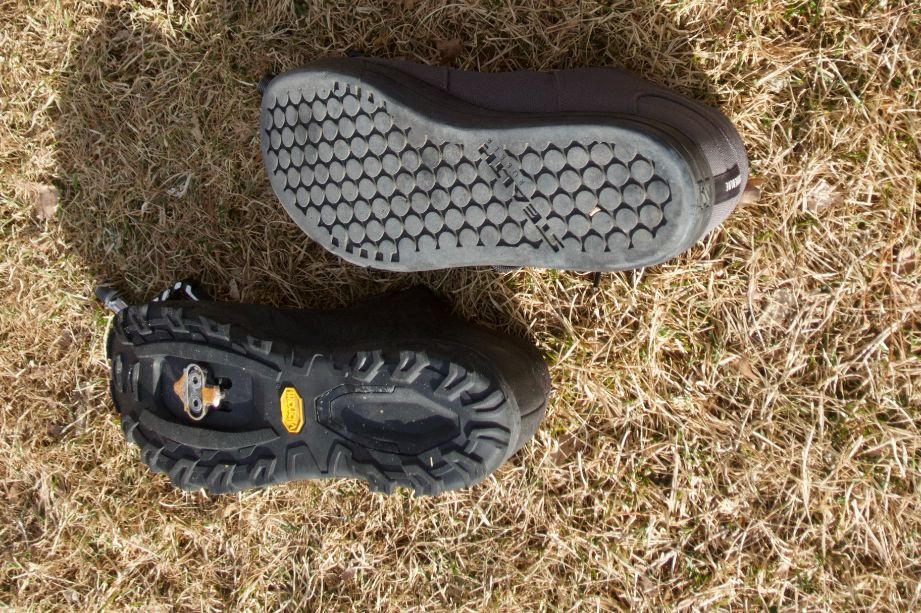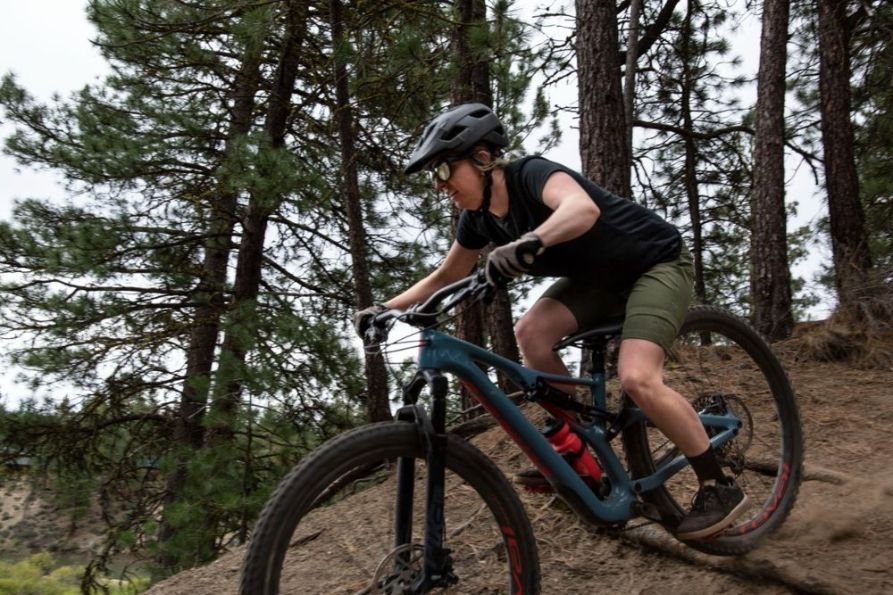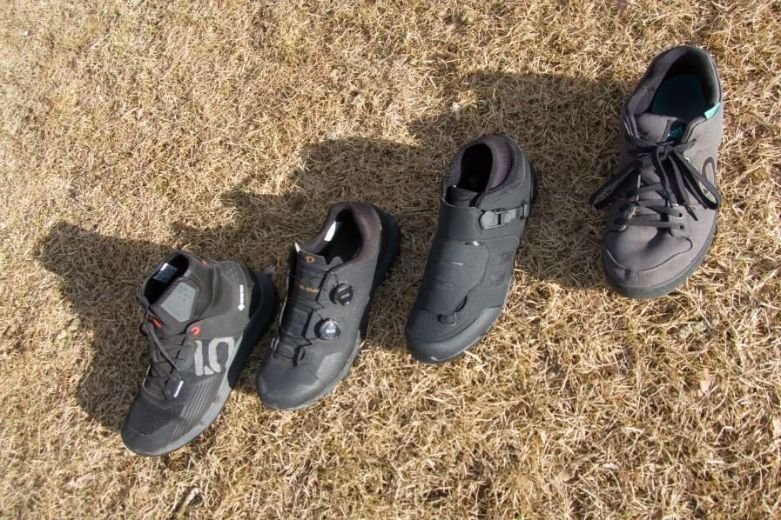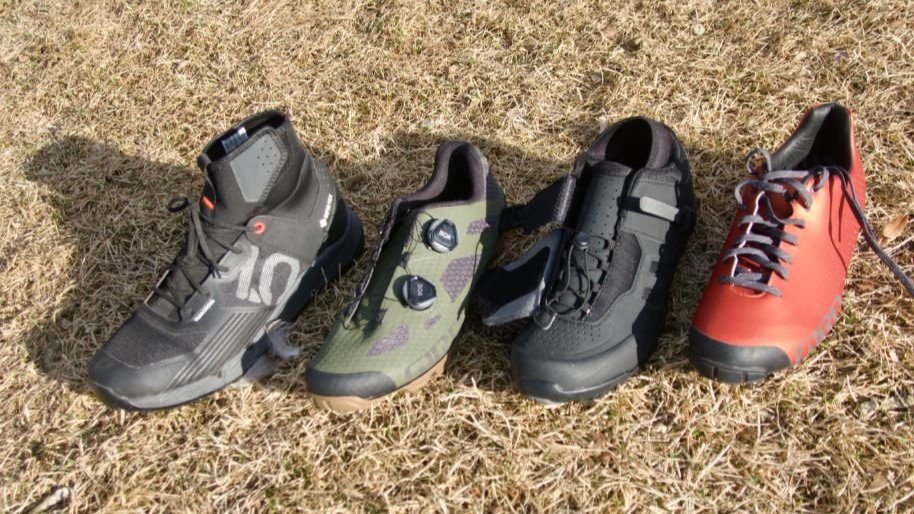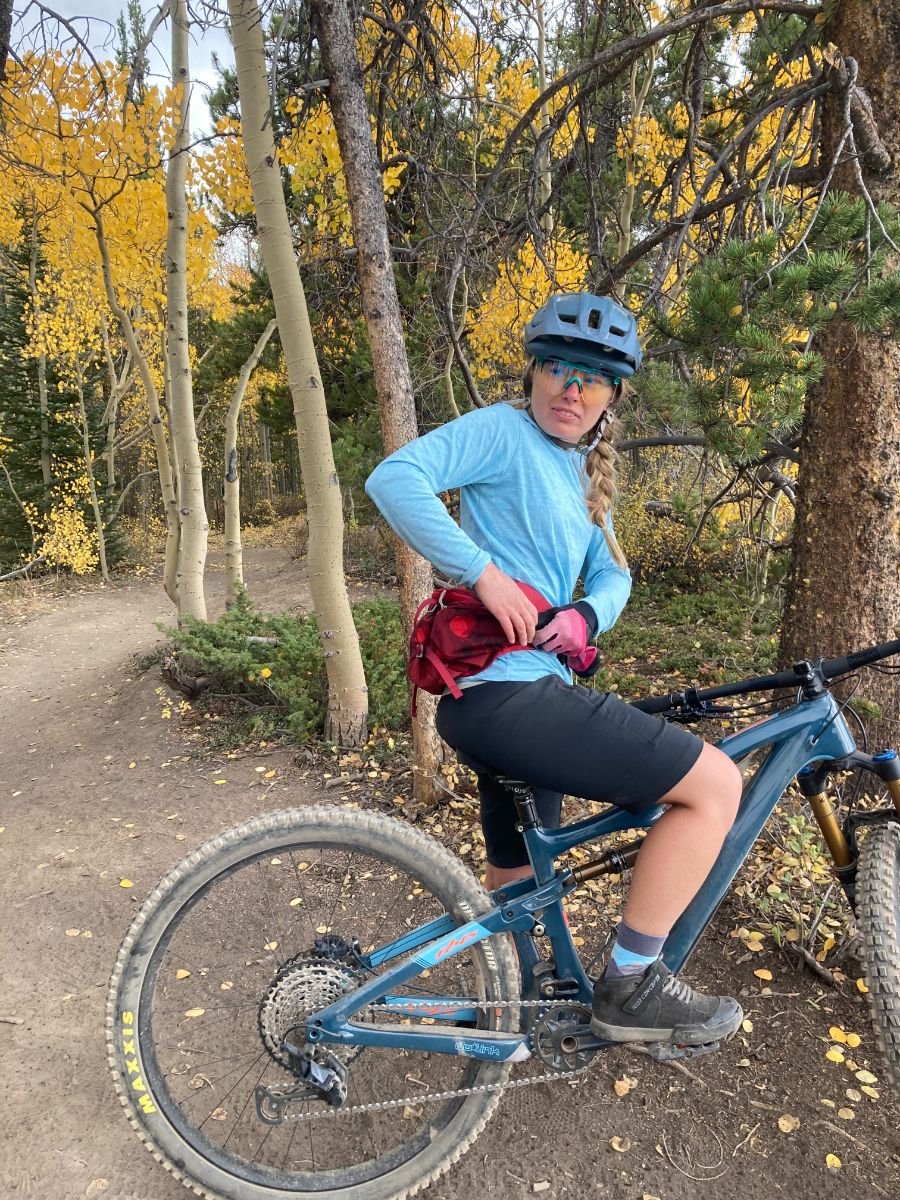Best Mountain Bike Shoes of 2024
The top mountain biking shoes for all riders: enduro, downhill, trail, cross country, and gravel
May 20th, 2024
Home > Gear Reviews > Bike
Having the right mountain bike-specific shoes helps riders get the most out of the bike shoe/pedal interaction and makes the ride faster, more efficient, and more enjoyable.
The foot-to-pedal connection is where a bike’s engine — the rider — interfaces with its transmission and gears to propel the bike forward. The shoe and pedal also need a secure connection for steering, jumping, and bunny hopping the bike.
The MTB shoe/pedal interaction helps determine how much power is transferred to crank the pedals or move the bike in the desired direction. That’s why we researched dozens of mountain bike shoes to find the best flats and clipless options for trail, downhill, cross-country, enduro, and more.
Related: Best MTB Pedals
This story may contain affiliate links, which help fund our website. We’re reader-supported, which means we build objective independent, editor-selected gear reviews. When you click on the links to purchase gear, we may get a commission — without costing you an extra cent. Thank you for supporting our work and mission of outdoor coverage for every body! Learn more.
Comparison Table
Men’s
| MEN'S MTB SHOE | TREELINE AWARD | PEDAL / CLIP COMPATABILITY | BEST USES | ENCLOSURE | WEIGHT | MSRP* |
|---|---|---|---|---|---|---|
| Five Ten Freerider | Best Overall Flat Read why |
Flat | Overall | Lace | 1 lb. 11.6 oz. | $110 |
| Crankbrothers Stamp Boa | Best Trail Flat Read why |
Flat | Trail | Boa (also available as lace and speed lace) | 1 lb. 11 oz. | $180 |
| Five Ten Freerider Pro | Best Downhill Flat Read why |
Flat | Enduro, Trail, Downhill | Lace | 1 lb. 7.8 oz | $150 |
| Giro Empire VR90 | Best Overall Clipless and Best Cross-Country Read why |
Clipless 2-hole | Cross-Country | Lace | 1 lb. 6 oz. | $300 |
| Giro Chamber II | Best Clipless Enduro and Best Downhill Read why |
Clipless | Downhill, Enduro, Trail | Lace and ankle strap | 2 lbs. 3.6 oz. | $150 |
Women’s
| WOMEN'S MTB SHOE | TREELINE AWARD | PEDAL / CLIP COMPATABILITY | BEST USES | ENCLOSURE | WEIGHT | MSRP* |
|---|---|---|---|---|---|---|
| Five Ten Freerider | Best Overall Flat Read why |
Flat | Overall | Lace | 1 lb. 11.6 oz. | $110 |
| Crankbrothers Stamp Boa (Unisex) | Best Trail Flat Read why |
Flat | Trail | Boa (also available as lace and speed lace) | 1 lb. 11 oz. | $180 |
| Five Ten Freerider Pro | Best Downhill Flat Read why |
Flat | Enduro, Trail, Downhill | Lace | 1 lb. 7.8 oz | $150 |
| Giro Empire VR90 | Best Overall Clipless and Best Cross-Country Read why |
Clipless 2-hole | Cross-Country | Lace | 1 lb. 6 oz. | $300 |
| Giro Chamber II (Unisex) | Best Clipless Enduro and Best Downhill Read why |
Clipless | Downhill, Enduro, Trail | Lace and ankle strap | 2 lbs. 3.6 oz. | $150 |
*See our Deals Page for discounts
See our most popular mountain bike guides in our Bike gear section:
The Best Mountain Bike Shoes
There are two main types of mountain biking shoes: flats and clipless (clipless compatible shoes are also clipless shoes, usually with a cover over the clipless channel). We don’t have an overall winner. Instead, we have category winners for both flat and clipless shoes.
Best All-Around Flat MTB Shoe: Five Ten Freerider
Pedal/Clip Compatibility: Flat
Best Uses: All-Around
Enclosure: Lace
Price: $100
Weight: 1 lb 11.6 oz
Models available: Men’s, Women’s, Children’s
What we liked: Good design and sticky grip
What we didn't like: Less durable than some more expensive shoes
The Five Ten Freerider is the quintessential “if it ain’t broke, don’t fix it” shoe. The relatively inexpensive (starts at $100) Five Ten Freerider from Adidas is inarguably one of the most popular mountain biking shoes available today.
This venerable flat pedal shoe has been around for a while, yet in 2021 it won five awards from other review sites, including SwitchBackTravel, Gear Junkie, and Bike Rumor. Customers agree. More than 4,000 customers on Amazon gave it an average rating of 5 stars, and for a good reason — it’s reasonably stylish, looking like skate shoes with an incredible grip that’s been leading the rankings for years.
Compare Prices of the Five Ten Freerider
Men's
Women's
The skateboard-style Five Ten FreeRider was our favorite flat shoe for all sorts of adventures.
The shoe’s sticky Stealth S1 dot rubber outsole offers a spiderweb-like grip on flat pedals, making it easy to pedal uphill. More importantly, if you’re jumping or knocked off your pedals for any reason, you’ll have an excellent grip the instant your foot reconnects with the pedal. The shoe is also comfortable to walk and hike in. It’s not a hiking shoe and doesn’t offer great purchase on muddy slopes. But the Freerider is the shoe all other flat pedal shoes try to beat.
Thankfully when Adidas took over Five Ten, it didn’t change the shoe much. Adidas added more recycled materials into the shoe and offers it in multiple versions, including vegan-friendly PrimeBlue recycled ocean plastic, canvas, and canvas leather combo. It’s available in women’s, men’s, and children’s versions. No matter which version you choose, they all breathe well.
The Freerider is the Best All-Around Shoe because it’s the most versatile, most awarded, and has the most and highest customer reviews.
Best Flat Trail Shoe: CrankBrothers Stamp
Pedal/Clip Compatibility: Flat
Best Uses: Trail
Enclosure: BOA, Lace, Speed Lace
Price: $180
Weight: 1 lb 11 oz
Models available: Men’s
What we lLiked: Excellent pin security
What we didn't like: Price
CrankBrothers has made bike components since the late 1990s and is best known for its bike tools and pedals — it was one of the earlier companies to offer clipless mountain bike pedals along with Shimano. At the end of 2020, it introduced its first shoes, the Stamp for flat pedals and the Mallet and Mallet E shoes for clipless pedals. The shoes share the name of CrankBrother’s most popular pedal series.
Compare Prices on CrankBrothers Stamp
The Stamp (lace-style shown) is a great, skateboard style shoe ideal for most trail conditions.
We loved how the tread of the Stamp is designed to match the pin pattern of the Stamp Pedal.
In the case of the Stamp, the Match tread pattern is designed to interface with the shape and pins on its Stamp pedals. When the foot is positioned on the Stamp pedals, the pins fit between lugs of the tread pattern. It’s just one of the many nice touches CrankBrothers brought to the shoe. We also found it interfaced well with other flat pedals we tested.
The shoes have a semi-stiff sole that makes it easy to walk in yet provides plenty of stiffness for power transfer to the pedals. All of these features make it a great trail and enduro flat shoe.
The well-ventilated shoe has some great additional features, including a padded tongue held in place by elastic straps on either side and silicon heel dots that help keep the shoe from slipping up and down. The Stamp is offered in three versions, a traditional lace system, which we tested, a speed lace version, and a BOA closure version. The eyelets on all models are recessed, making it harder to snag them on anything while riding. Our version featured an elasticized pouch to tuck the bow and laces away. All-in-all a great trail shoe we’re happy to use for both enduro and downhill riding.
See our most popular mountain bike guides in our Bike gear section:
Best Flat Downhill MTB Shoe: Five Ten Freerider Pro
Pedal/Clip Compatibility: Flat
Best Uses: Enduro, Trail, Downhill
Enclosure: Lace
Price: $150
Weight: 1 lb 7.8 oz
Models available: Men’s and women’s
What we liked: Awesome sticky rubber, extra padding and toe protection, balance of flex and stiffness in sole
What we didn't like: Price, sole durability
Wait, you already gave the Freerider a win? What’s different here? Like the original Freerider, the Freerider Pro is continually one of the highest-reviewed and awarded mountain bike shoes. It has a 5-star ranking from more than 1,700 Amazon reviews. In 2021 it received editors’ choice Awards from Bicycling Magazine, Outdoor Gear Lab (in both men's and women’s categories), Mountain Bike Rider, and 3 other awards. Bicycling Magazine claimed: “The Freerider Pro pretty much perfected the category. The Stealth S1 sole is stiff enough for riding and has enough flex for walking, plus it sticks to your pedals like glue.” We agree.
Compare Prices on Five Ten Freerider Pro
Men's
Women's
So what’s the difference? The Freerider Pro has the same Stealth S1 rubber as the regular Freerider but is more suited to the demands of ripping down bike parks and ski slopes in the summertime. Sure, you can use the Freerider Pro as an enduro shoe, but downhill riders who prefer flat pedals appreciate the extra padding, toe protection, and stiffer sole of the Freerider Pro.
The Freerider Pro is also a little lighter than the standard version of the Freerider. It’s a little more expensive than the Freerider. But if you’re looking for a more downhill-specific shoe, you can’t go wrong with this best-in-class beast. It’s also offered in multiple styles, including a PrimeBlue recycled version.
The Best Overall Clipless and Cross-Country Shoe: Giro Empire VR90
Pedal/Clip Compatibility: Clipless
Best Uses: Cross-Country
Enclosure: Lace
Price: $300
Weight: 1 lb 6 oz
Models available: Men’s and women’s
What we liked: Very light, performs very well
What we didn't like: Premium shoe has a premium price
The Empire VR90 is a premium lightweight clipless shoe ideal for long, hard days on the trail. This Empire VR90 is stylish. You’d look fast wearing this shoe while riding a kid’s big wheel or while you’re riding a donkey-backward.
Whether you’re racing cross-country or chasing the sun on the gravel path or on a bikepacking trip, this is the shoe that will ensure maximum power transfer to the pedal. That’s thanks to its Easton carbon fiber sole, which provides maximum stiffness while cutting weight — it’s the lightest shoe we tested. Its one-piece synthetic upper is light, breathable, and sheds water well.
Compare Prices of the Giro Empire VR90
Men's
Women's
The Giro Empire VR90 was the best cross-country shoe we tested, and it gushes style.
The Giro Empire VR90 isn’t a shoe made for walking long distances or wearing around town, but it’s got aggressive Vibram lugs for short hikes, and users can also add two metal cleats at the toes for extra traction if they want.
The VR90 shown with cleats (top) and without (bottom).
Out of the box, the shoe felt a little narrow, but as a premium shoe, it comes with arch supports of various thicknesses, allowing it better accommodate a variety of foot shapes.
We’re not the only ones who appreciate Empire VR90. In 2021 it won at least six awards from other publications, including the only Editors’ Choice Award from Outdoor Gear Lab, which claimed: “An incredible blend of lightweight, stiffness, and comfort, making it one of the best shoes we've ever tested.”
Best Clipless Enduro and Downhill Shoe: Giro Chamber II
Pedal/Clip Compatibility: Clipless
Best Uses: Enduro, Downhill, Trail
Enclosure: Lace and ankle strap
Price: $150
Weight: 2 lbs 3.6 oz
Models available: Men’s
What we liked: Traction, enclosure control, design makes for easier hike-and-bike and reduces foot fatigue
What we didn't like: Heavy
The is a versatile clipless shoe that takes notes from the skatepark like flat-pedal shoes that downhillers and enduro riders love. With a Vibram Megagrip rubber outsole, the shoes offer plenty of traction that works well with clipless pedals and larger platforms. The shoe’s midsole is solid under but has flex in the toes, making it more comfortable for walking and hike-a-bike segments.
Compare Prices of the Giro Chamber II
The shoe also features a nearly seamless upper material and adjusts well to multiple types of feet thanks to its laces and hook-and-loop closure at the top. Altogether, this makes the shoe ideal for those riders who want to use them on more challenging trails and even downhill courses for those who insist on riding downhill with clipless pedals.
The Chamber II offers excellent value and is a favorite of at least four roundup reviews. For instance, Adventure Junkies and Switchback Travel called it the best for downhill and enduro riders. The Adventure Junkies put it succinctly: “What makes this shoe so unique is how deceiving its appearances are. It may [sic] seem like a casual, flat pedal shoe, and indeed, it has the cleat setback positioning of one — but it offers the power of a clipless connection.”
The biggest drawback of these shoes is they are among the heaviest mountain bike shoes we considered. However, you’re not trekking miles in them and probably won’t notice the weight when you’re thrashing around tight berms.
Best Clipless Comfort Shoe: Pearl Izumi X-Alp Summit
Pedal/Clip Compatibility: Clipless
Best Uses: Bikepacking, budget, routes with known hike-a-bike
Enclosure: Dial lace and strap
Price: $150
Weight: 1 lb 7 oz
Models available: men’s and women’s
What we Liked: Comfort, adjustability, hike-a-bike is still comfortable
What we didn't like: May be too comfortable for precise control
One of our testers loves the Pearl Izumi X-Alp Summit, calling it her go-to shoe. It's built on the same platform as the Pearl Izumi Elevate, which was last year's winner for most comfortable shoe and is now discontinued. We’ve thoughtlessly put 10+ hours a day in with the Elevate. Despite the stiff nylon sole, we had no complaints on hike-a-bike sections or even sitting down for an apres beverage or two. The X-Alp Summit has a slightly different design and is $50 less expensive than the X-ALp Elevate. But it still has some design features we like from the Elevate, and for that reason, we give it most comfortable award.
View the Pearl Izumi X-Alp Summit
Men's
Women's
We credit the comfort to two well-placed BOA closures, one that secures the forefoot and the second just over the top of the foot. Another feature the Summit keeps from the Elevate is the Vibram outsole for hike-a-bike situations. We would slip our feet into these shoes for multi-day bikepacking and touring trips.
The shoes are also surprisingly light, weighing just 1 pound, 7 ounces per pair in a Men’s size 11 (US), just a few ounces more than the Empire VR 90 — a premium shoe that’s almost twice the price. The Pearl Izumi X-Alp Summit is a solid choice if comfort for long all-day riding is how you like to get outdoors.
Best Affordable MTB Shoe: Giro Berm
Pedal/Clip Compatibility: Clipless compatible
Best Uses: Budget, Trail
Enclosure: Hook and Loop
Price: $75
Weight: 1 lb 13.2 oz
Models available: Men’s and women’s
What we liked: Price and the features they can manage at this price, comfort
What we didn't like: Not as stiff as other cliples shoes
The Giro Berm is the least expensive mountain bike shoe we considered, and a lot of people like it, giving it an average of 4.5 stars out of 320 reviews on Amazon. Clipless or clipless compatible shoes tend to be more expensive than flat shoes because of the extra technology needed for cleats and adjustability. But somehow, Giro manages to keep the retail price of this shoe well under $100.
Compare Prices of the Giro Berm
Men's
Women's
Maybe it’s the simple design of the Giro Berm. With two large hook-and-loop closures, it’s a shoe that’s easier to approach and easier to wear. This kind of makes sense since this shoe is aimed at beginners or casual riders moreso than hardcore mountain bikers. The generously wide cleat recess can come with a textured cover, making it easier to use the shoe with flat pedals. When used with clipless pedals, the wider cleat pocket makes it easier to place the cleat properly on the pedal.
The synthetic upper material has generous amounts of mesh, and the hook-and-loop closure does a decent but not great job of securing the shoe. Since this shoe treads between flat-pedal and clipless shoes, its last isn’t as stiff as our other clipless shoe winners, but it’s also stiffer than flat-pedal shoes.
Still, it’s a comfortable shoe that’s great as an entrant into mountain biking shoes and gives the novice rider options that you won’t get with a dedicated clipless or flat pedal shoe.
Other Mtb Shoes We Tested
There are many other excellent mountain biking shoes from companies, including Specialized, Ride Concept, Scott, Shimano, Bontrager, and more. We couldn’t test all of them, but our testing and research revealed the above as our favorite picks. The following MTB shoes were contenders but didn’t quite make the winners list:
Shimano XC3
Pedal/Clip Compatibility: Clipless
Best Uses: Cross-country, race
Enclosure: Dial lace
Price: $130
Weight: 1 lb 5.1 oz
Models available: Men’s and women’s
Our tester liked the Shimano XC3 for a cross-country shoe, observing that they fit true-to-size, and they appreciated BOA closure. However, she noted that they weren’t great in hike-a-bike situations and wanted more time with them on the trail before rendering a final verdict.
Compare Prices of the Shimano XC3
Men's
Women's
Giro Sector
Pedal/Clip Compatibility: Clipless
Best Uses: Gravel, All-Around
Enclosure: BOA
Price: $130
Weight: 1 lb 8 oz
Models available: Men’s and women’s
The Giro Sector is another beautiful, high-end shoe from Giro. It’s suitable for cross-country, trail duty, and gravel grinding. Bicycling Magazine called it the best new gravel shoe. The Sector was very comfortable in our testing, thanks to two BOA closures placed like the Pearl Izumi X-Alp Elevate. This was also a strong contender but was overshadowed by Giro’s Empire VR90 and the Giro Elevate.
Compare Prices of the Giro Sector
Men's
Women's
Five Ten Trailcross XT
Pedal/Clip Compatibility: Flat
Best Uses: Cross-country, trail, winter
Enclosure: Lace
Price: $165
Weight: 1 lb 7.6 oz
Models available: Men’s and women’s
The Five Ten Trailcross XT was the only Gore-Tex model we tested. Despite the Gore-Tex, we were impressed with how well the shoe breathed. It features an updated version of the Stealth rubber, which Adidas calls Stealth Phantom, and the midsole, and the last is akin to the stiffness of the Freerider Pro.
However, we’re a little skeptical of the neoprene bootie cuff. When worn with calf-high socks that get soaked, it’s like wearing a wick, and we’d be worried about swampy cold feet. We might recommend it as a winter mountain biking shoe, but we like to hit the mountains in other ways in the winter.
Compare Prices of the Five Ten Trailcross XT
Men's
Women's
Pedal/Clip Compatibility: Flat and clipless versions available
Best Uses: Budget, trail, all-mountain
Enclosure: lace
Price: 120 to 130
Weight: 11.3 oz to 12.9 oz (per shoe)
Models available: unisex
The Specialized 2FO Roost is available as both a clipless and flat-pedal shoe. They have some good reviews and received a few awards, but we couldn’t test them, so were unable to verify our research-based findings.
Compare Prices of the Specialized 2FO Roost
Why you need MTB-specific footwear
Mountain biking demands both skill and endurance. Whether you're a casual rider or a seasoned pro, the gear you choose can significantly impact your performance and overall experience on the trails. One piece of equipment that often gets overlooked is your choice of footwear. While it might be tempting to hit the trails in your regular sneakers, investing in mountain bike (MTB) specific shoes can elevate your riding experience in several ways. Here's why:
Enhanced performance
Mountain bike shoes are purpose-built for off-road cycling. They feature stiff soles that efficiently transfer power from your legs to the pedals, allowing for more efficient pedaling and better energy transfer. This translates to improved speed and control on the trails.
Grip and traction
Unlike regular shoes, MTB shoes are designed with specialized rubber outsoles that provide better grip and traction. The grippy soles of MTB shoes ensure that your feet stay firmly planted on the pedals, reducing the risk of slips and accidents.
Stability and support
Mountain biking often involves navigating technical terrain and obstacles such as roots, rocks, and drops. MTB shoes have better stability and support than street shoes, thanks to features like reinforced toe boxes and ankle support. Some even have more advanced closure systems such straps or BOA dials. This added support helps protect your feet from impacts and reduces the risk of foot or ankle injuries.
Pedal compatibility
Most mountain bike shoes are designed to work seamlessly with your mountain bike pedals. Think of your shoes and pedals as a system. The goal is to create a more efficient and controlled pedaling motion. By using clipless pedals and compatible MTB shoes, you can maximize power transfer. It can also help you maintain better cadence and lead to better control over your bike, especially in technical terrain and during high-speed descents.
Protection and durability
Mountain biking can be rough on your gear, especially your footwear. MTB shoes are built to withstand off-road riding, with features like reinforced uppers, impact-resistant materials, and durable construction. Investing in quality MTB shoes not only enhances your riding experience but also ensures that your feet are well-protected from roots, rocks, and the impact from bike crashes.
While it may seem like a small detail, choosing the right footwear can make a difference in your mountain biking adventures. MTB specific shoes offer a range of benefits, from improved performance to better grip and protection.
An example of clipless shoe soles on the bottom left and flat shoe soles on the upper right.
Types of Mountain Bike Shoes
Mountain bike shoes and pedals fall into two main categories, clipless and flats.
Clipless pedal shoes
Clipless shoes have cleats on the bottom that lock into specially designed pedals.
Flat-pedal shoes
Flats usually have extra gummy rubber compounds on their soles designed to stay put on the pedals while providing ample grip for any pegs that stick out of the pedal.
Clipless pedals are generally much smaller than flat pedals for mountain biking. The larger surface area of a flat pedal makes it efficient for transferring as much power to the pedal as possible and makes it easy to provide a stable interface between the MTB shoe and pedal. In a clipless system, locking the bike shoe into the pedal and the sole’s stiffness provides stability and power transfer.
Hybrid Shoes
Since there are hybrid mountain bike pedals (which have a platform on one side and a clipless capability on the other), one might think there are hybrid mountain bike shoes. This term is used very rarely and could refer to a couple of things, primarily a shoe that is designed both for walking and mountain biking or city biking. They often look like street or flat-pedal shoes but have a recessed chamber for a clipless pedal cleat.
Should I get Clipless or Flats?
When I got back into mountain biking a few years ago, I had well-worn clipless shoes for my city bike and pedicabbing — aka riding people around the city on a trike. I’d used clipless pedals growing up mountain biking, but my buddy convinced me to use flat pedals and shoes. On the hairpin turns and drops of Colorado’s Front Range, I was glad to have them.
However, I was using some stiff-soled trail shoes at the time. They interfaced well with the pedals, but the sole compound was hard rubber that quickly tore to shreds on the pegs of flat pedals. Since then, I’ve used flat and clipless pedals as well as flat and clipless shoes. Both have their merits and detractions.
Treeline Review mountain bike gear writer Stasia Stockwell tested mountain bike shoes for this story.
mountain bike shoe categories
Riders use mountain bike-specific shoes for four distinct types of riding: enduro or all-mountain riding, trail riding, cross-country riding, and downhill riding.
We’ll get into each type of riding, but first, it helps to understand that:
Cross-country riders (and gravel riders) are the most likely to use clipless pedals and shoes, followed by enduro and trail riders.
Many trail riders (especially those happy to take on rugged terrain) and downhill riders are more likely to opt for flats.
There are also subcategories: freeride, endurance cross-country, fat bike, dirt jump, and more.
Riders are likely to try or enjoy multiple riding styles, so they should get shoes for the types of riding they plan to do the most.
Cross-Country Shoes (XC Shoes)
Cross-country riders are the most weight-obsessed; they’re concerned with going far, fast, and light. These riders want lightweight bikes and may opt for hardtail bikes over full-suspension bikes. They may do some technical riding, but above all, they want a bike that goes long distances, particularly in races.
These riders are most likely to opt for lightweight clipless shoes and pedals. They want a solid, rigid sole and may look for a carbon-fiber sole to reduce weight while improving stiffness. They still want more traction than a road shoe, but they’re not as concerned with hike-a-bike on the trails and don’t plan on doing a lot of walking in the shoes.
Many cross-country shoes are the same shoes that gravel grinders and bike packers use.
Trail Shoes
Trail riders are likely to take on more technical trail conditions than cross-country riders, facing wilder conditions than cross-country riders with some obstacles, jumps, rocks, and more (note: all-mountain and downhill riders will generally face the most technical trail conditions). They’re likely to have a slightly beefier bike with heavier components that’ll stand a mild thrashing. Some trail bikes are hardtails, while others are full suspension bikes.
Many trail riders will still use a clipless mountain bike shoe, but they may have to hike small portions of the trail. They'll want an MTB shoe with decent traction and grip for such sections. If they opt for a clipless shoe, they will want a pretty stiff sole but enough comfort and flexibility to walk in them when needed. If they’re going with a flat pedal, they’ll want a bike shoe with stiff soles that help ensure great power transfer from the shoe to the pedal.
Enduro and All-Mountain Shoes
Enduro and all-mountain riders are those who are climbing up hills and mountains for the sheer joy of going back down them. Some will ride a hardtail bike with just a suspension fork, but many are on full-suspension bikes that can take the rigors of quick drops, jumps, and absorbing bashing into rocks and steps on steep climbs. They’re facing the broadest range of biking conditions.
They’re taking on tight switchbacks on both the climb and descent, riding through rock gardens, up and down steep steps, rock gardens, slabs, and jumps. Some enduro riders still opt for a clipless shoe and clipless pedal system, but many will opt for flat pedals because they know they’ll be dabbing their feet on some of the difficult spots or dismounting quickly. They might be hike-a-biking to climb up hills and rock slabs they can’t necessarily climb in the saddle.
These riders want a shoe with a stiff but flexible sole with grippy rubber that interfaces well with the studs on flat pedals. Good all-mountain shoes need to be comfortable enough to walk in yet stiff enough to give the rider confidence that when they’re pedaling hard, the power transfers well. The shoes will absorb the impact while jumping the bike or climbing obstacles and act like they’re glued to the pedal.
Downhill Shoes
These riders aren’t usually climbing a hill. They’re usually taking a ski lift or starting at the top of a mountain to drop in. The bikes can climb if needed, but with beefy, heavy suspension with long travel, these bikes are made for big jumps and long drops, where riders might be traveling 10 or more feet in the air before landing. They must be ready to dismount quickly and unexpectedly if they’re worried about a bad landing, going over a switchback curve, or falling off a narrow wooden run. As such, most downhillers opt for flat shoes since it’s easier to dab a foot or toss the bike away from the body if they don’t have to unclip.
Like the all-mountain and enduro riders, these riders want a shoe that interacts well with the pegs in a flat pedal, with gummy rubber. Unlike enduro riders, downhill riders aren’t as concerned about walking long distances. As such, they can opt for a stiffer sole and may want a shoe with more toe protection than an enduro rider since they might be more likely to land on their toes or hit a rock on a trail they may not have seen while screaming down the downhill track. These are likely the types of shoe free-riders, pump track riders, and dirt jumpers will also want to use.
Winners and contenders playing nice together. Some of the mountain bike shoes we tested. From left to right Five Ten Trailcross GTX, Pearl Izumi X-Alp Elevate, Shimano ME702, Five Ten Freerider.
How We Researched and Tested
We followed a well-developed trail network of testing and research by pedaling through expert reviews from over 10 sites and magazines as sources for expert material. We coupled those with verified customer reviews of mountain biking shoes and consulted our numerous mountain biking buddies. We then tested the most promising models and got out in many of the top MTB shoes. Our findings are based on almost 2 years of testing in fall, winter, spring, and summer.
Two of our in-house experts, Stasia Stockwell and Chris Meehan tested shoes throughout Colorado. Chiefly, they took them on trails and downhill courses along the Front Range and in and around Crested Butte.
After compiling our in-house testing with expert and customer reviews, we made our picks for the top mountain biking shoes in numerous categories.
We meta-analyzed some of our favorite sources, like Switchback Travel, Outdoor Gear Lab, and The Adventure Junkies. We consulted numerous bicycling-specific and mountain bike-specific sources like Mountain Bike Rider, Bike Perfect, and Singletracks. This research provided a vast source of expert reviews to look at, compare, and contrast.
We tested the MTB shoes on some of our old and new favorite trail networks like Floyd Hill and Winter Park’s Trestle Bike Park, Deer Valley Resort in Utah, Buena Vista, Breckenridge, and more, primarily doing a combo of enduro and downhill riding.
Various closure systems for mountain bike shoes from left to right: Velcro cuff with laces, BOA closure, ratcheting strap and speed laces and good old fashioned laces.
buying advice
A host of factors go into what makes a good mountain bike shoe.
Since there are two main types of shoes — clipless and flats — there are differences in what makes each shoe ideal for different uses. We’ll discuss the similarities across all the different types of mountain bike shoes, as well as the key differences between the different categories and why they matter.
Fit and comfort
Without saying, if it doesn’t fit your foot, don’t get it. No matter how well the shoe is rated. You want a good fit around the toes and a snug heel with mountain bike shoes. Your foot should be comfortable in the toe box, but note that cross-country shoes and clipless shoes in general usually seem a little thinner through the toe box than flat pedal shoes, which often look and feel more like a skate shoe.
Sole stiffness and power transfer
This is the main difference between the two shoe types. With a flat mountain bike shoe, you’ll want a sole with some flexibility so you can walk in it and hike in it with ease. If you’re using a clipless MTB shoe, you want a stiff sole that transfers as much power as possible to the pedal itself. Suppose you’re riding clipless but doing more challenging terrain where you anticipate having to get off the bike and hike from time to time. In that case, you’ll want a flexible sole, particularly in the front, so it’s easier to walk in.
Traction and grip
When using flat shoes, look for a grippy rubber outsole, like the dot rubber on the Adidas 5.10 Freerider shoes. It’s akin to the dot rubber found on some great approach shoes. Crank Brother’s Stamp shoes take a different approach, with the tread patterns matching the pins on their flat pedals. Either way, you want soft enough rubber to grip the studs on the pedals but strong enough to keep them from leaving holes in the tread.
Most clipless MTB shoes have lugs more akin to hiking shoes lining the edges of the foot and a recessed chamber to mount the cleat that locks into the pedal. For these, you’re looking for aggressive lugs that will help you climb uphill and brake downhill when you need to walk in them. The chamber in the middle should be wide enough to allow mud and muck to clear out easily when needed and allow space for adjusting the cleat forward and backward to account for the rider’s preference.
Cost
Good mountain biking shoes range wildly in price. A good entry-level flat pedal mountain bike shoe, like the Giro Berm, retails for $75. A high-end carbon-fiber, clipless cross-country shoe, like the excellent Giro Empire VR90, retails for a stiff $300. Shimano has even more expensive MTB shoes designed for cross-country racers.
At the higher-end range, a shoe will be lighter. The Empire was the lightest shoe we tested, weighing 1 lb., 6 oz. per pair (before adding cleats or toe spikes). But most mountain bike shoes should weigh well under 3 pounds per pair, and only then if they’re heavier, warmer shoes designed for winter riding, which we didn’t test for this guide.
Closure systems
Closure systems are probably more variable in mountain bike shoes than any shoe or boot type we’ve seen and tested. Some shoes close via hook-and-loop (aka, a Velcro strap) or ratchet straps. Others use laces or speed lace systems, and others use BOA closures. Some have flaps covering the closure systems or a mix of all the above. We preferred the good old-fashioned laces and the new-fangled BOA systems in our testing. MTB shoes with these two systems seemed to do the best job of conforming equally well to a wide foot or narrow foot.
Breathability and ventilation
While some MTB shoes are offered as waterproof versions, and some even have neoprene-like ankle coverings, you’re likely to slosh through puddles and rivers on many mountain bike trails and outings. You’d think a waterproof shoe would be nice, but splashing through calf-deep streams in waterproof shoes just means that water is likely to be higher than the top of the shoe, and the sock will act as a water wick, leaving you sloshing around for the rest of the ride.
If you’re looking for a winter biking shoe, waterproofing is fine, but if you’re looking for a shoe for most of the year, good ventilation will serve you better to let your feet dry while riding.
Water resistance
There are cases for and against water-resistant or waterproof mountain bike shoes. If you’re in a wetter climate or riding in the cold you may want a waterproof mountain bike shoe. However, only some winter mountain biking shoes have much of a gaiter that will keep the water from stream crossings and splashing puddles from trickling down the ankle cuffs and into the footbed. Also, waterproof shoes often tend to run warmer than non-waterproof shoes. So riding in waterproof mountain biking shoes on hot days could lead to wet, sweaty feet.
Weight
The majority of mountain bike shoes we tested were in the range of just over a pound to just over two pounds. Light weight in mountain biking isn’t necessarily as important as it is in other disciplines like road racing. The riders who want the lightest mountain bike shoes will likely be cross country racers who put more of a premium on weight.
Sizing
Just like any hiking shoe or boot, the sizing of shoes varies by brand and model style. We find the most accurate sizing for most shoes is the EU sizing rather than the US sizing. In the end it’s always best to try a shoe on before investing $100 or more—especially if it’s a shoe from a brand you haven’t worn before. Otherwise, order from a retailer that has an easy return policy, like REI.
Insole and Arch Support
The majority of mountain bike shoes we tested had standard insoles like those you’ll find in hiking shoes and boots. Some premium ones like the Giro Empire VR90 allow you add more or less arch support with inserts.
If you know you prefer a certain type of insole or need custom insoles you should be able to replace your insoles easily. Of note, clipless shoes, in particular, often have stiffer soles to maximize the transfer of power from foot to pedal. As such you may want more cushion insole cushioning in these types of shoes.
Reinforcements and Toe Caps
A good mountain bike shoe should be able to withstand a lot of hard wear and has some reinforcements at the toe and heel. Most have at least a light toe-cap, similar to what you’d find on a hiking shoe or approach shoe to help protect your toes in case you bash into a rock or root. This is more important for downhillers in particular since they’re more likely to bash into narrow trail obstacles at speed. As such they may want a shoe like the Five Ten Freerider Pro, which has a more pronounced and durable toe cap.
Comfort while hiking
Mountain bike shoes aren’t made for long hikes. However, they are made for short periods of hiking where it’s too difficult to ride. Some, particularly the stiffer clipless shoes, have aggressive lugs and or cleats to make them more capable on difficult terrain.
In many flat-pedal shoes the premium is on the interaction with the pins on the pedal. While they have some traction for hiking, like approach shoes, many don’t have super deep lugs. They’re comfortable for hiking, but other than the sticky rubber, don’t always offer a lot in hiking traction.
Durability and the Environment
More companies are introducing sustainable or recycled materials into their MTB shoes. For instance, the Adidas 5.10 Freeriders we tested were the PrimeBlue version, with upper material made of Parley’s recycled ocean plastic. In our testing, they seemed as durable as other versions of the venerable Freerider line.
The Pearl Izumi X-Alp Elevate uses an algae-based material called Bloom in 20 percent of its midsole. Looking forward, we hope to see more of these uses of bio-based and recycled materials and more sustainable manufacturing processes in mountain biking shoes.
With that said, a good pair of mountain bike shoes should last for years, whether or not they’re using the latest in sustainable materials or not. Unlike a pair of trail running shoes which may only last one season if worn for hundreds of miles, the wear and tear on mountain bike shoes and their soles should be less than on running and hiking shoes.
For instance, the author had a pair of relatively inexpensive Pearl Izumi clipless shoes that lasted for about 5 years and 1,500 or more miles of pedaling. These were primarily used in the city, but their longevity surprised him.
Treeline writer and women’s mtb shoe tester Stasia Stockwell riding in Colorado. Photo courtesy Stasia Stockwell.
How to Choose the Best Mountain Bike Shoe for you
The main things to consider when choosing a mountain bike shoe are: How will you use it, and what types of pedals do you have or plan on using?
If you’re planning on doing a lot of trail and enduro or downhill riding, we recommend one of our picks for flat-pedal shoes. If you plan on doing a lot of cross-country or gravel riding, we recommend one of our clipless picks. If you’re just getting into mountain biking and aren’t sure, the Giro Berm is an excellent place to start.
Do I need special shoes for mountain biking?
If you’re riding flat pedals you can get away with riding in normal shoes. However, after riding a season in approach shoes we found that the rubber soles were largely torn apart since they weren’t intended to interact with the sharp pins on the pedals. As such, we recommend shoes intended for mountain biking.
If you’re riding clipless pedals you absolutely need to use mountain-bike specific shoes. Not even road-bike shoes will work with all types of clipless pedals.
How much do you want to spend on a mountain bike shoe?
A good guide is to plan to spend more than $100 on most quality mountain bike shoes. As with road shoes, cycling shoes can get up there in price. The most high-end mountain bike shoes can fetch retail prices over $425, but unless you’re racing professionally, you don’t need to spend that much.
Flat-pedal shoes are usually less expensive than clipless shoes. There’s just less material that goes into them. For a flat shoe, our most expensive choice, the CrankBrothers Stamp, is $180, which is not cheap, but it’s also not prohibitively expensive. Our top clipless shoe, the Giro Empire VR90, is $300; but we think the extras it comes with and the materials in the shoe make the expense worth it for serious riders who want a high-end XC shoe. But if you’re just getting into mountain biking, dropping $80 on the Giro Berm shouldn’t be a big deal, or for that matter, $100 on a Five Ten Freerider is well worth it.
Mountain bike specific shoes, like the Freerider on the left are designed to grip the pins on pedals without damaging the soles. The soles of the Hanwag hiking shoes on the right were clearly damaged by the pins after a season of riding.
Care and Maintenance
With a few exceptions, care, and maintenance for mountain bike shoes should be the same as trail running shoes or hiking boots.
Wipe them dry of dirt and grime after a muddy or particularly dusty ride. If your feet got sweaty or wet during the ride, pull the insoles out so everything can dry quickly; this helps reduce odors and mildew — no one likes stinky feet and shoes.
We didn’t include any waterproofed shoes among our top picks, so they don’t require the care and cleaning that those shoes and boots need. So, if they’re pretty dirty after a ride, hose them down. We recommend hand washing and with a mild detergent if they need a deeper cleaning.
The main difference in maintenance for flat and clipless shoes is how to care for the bottom of the shoe. Flat shoes are designed with treads that don’t get torn apart by the metal pins that stick out of flat pedals as quickly as trail runners or hiking shoes, but the rubber still wears down over time. With less tread to interact with the pedal, you don’t have as solid an interface with the pedal, leading to control issues on the trail. If that’s the case, it’s time to consider new MTB shoes.
With clipless shoes, check the cleat after rides.
Clean them of dirt or pebbles that work get stuck beneath the cleat. Ensure that the Allen bolts securing them are tight and that the cleat hasn’t shifted positions.
Over time both the cleat and the bolts that secure it in place will get worn down. If you notice that the heads of the bolts are getting destroyed, consider replacing them. Likewise, if the cleat feels particularly loose when you’re pedaling, check the tension on the pedal, but also check to see if the cleat is significantly worn down. If so, replacement cleats generally run around $20 and are easy to replace–as long as you can still access the bolt heads.
The author Chris Meehan mountain biking in Colorado.
About the Author & Why You Should Trust Us
As an outdoors writer covering adventure and gear, I have written multiple pieces about mountain biking, and I have a long history with the sport. I have also contributed multiple guides to Treeline Review, Backpacker, and other outdoor publications and organizations.
I've been a mountain biker since the late 1980s, starting in the Appalachians. Specialized, Trek, Gary Fisher, and Cannondale were among the first companies to mass-produce mountain bikes — my first ‘mountain bike’ was a 10-speed Huffy Scout, which I got around ‘87. It was around the time that the first clipless pedals for road cycling were allowed in competitions and shortly after were introduced for mountain biking. Bikers used toe clips for more power and connection to their pedals before that. I think I had my first pair of clipless pedals around ’92.
These days, I spend most of my time mountain biking, backpacking, hiking, climbing, and crisscrossing Colorado and the Rocky Mountain region. I enjoy using all my knowledge of gear and skills to learn about new equipment and how it will benefit me — yes, I’m selfish — as well as Treeline’s readers.
I have authored multiple outdoor guidebooks. My most recent Falcon Guide, Colorado’s Best Front Range Adventures: The Greatest Hiking, Climbing, Paddling and More From Denver to Colorado Springs and Fort Collins. I cover the best hiking, biking, climbing, and rafting in the region. I’m also the author of Falcon Guide’s Climbing Colorado's Fourteeners: From the Easiest Hikes to the Most Challenging Climbs and edited Justin Lichter’s excellent guide to thru-hiking titled “Trail Tested: A Thru-Hiker's Guide To Ultralight Hiking And Backpacking.” All of this experience has helped me become a first-rate gearhead and product tester.
Overall, I have 20-plus years of exploring, mountain biking, hiking, backpacking, climbing, guiding, and playing in the wild. I worked with National Geographic and their mapping division in developing their Colorado 14ers Map Pack Bundle. I’ve written about hiking and climbing for Elevation Outdoors, including stories about Colorado 14ers and outdoor apps to boost adventures.
I’ve written about countless outdoor companies, outdoor sports, and tested gear with publications including CompanyWeek, Outdoor USA Magazine (print), Elevation Outdoors, 5280, and more.
For this review, we tested MTB shoes, talked with other mountain bikers, spent a lot of time researching shoes and pedals for all types of mountain bikers, and researched hundreds of reviews.
At Treeline Review, we strive to offer unbiased reviews to help you find the best product for the price. Treeline Review doesn’t accept sponsored content, native advertising, or paid reviews. I am not sponsored by any company. Additionally, none of my family members are sponsored by, employees, or ambassadors of any company in this review.
You can see all of Chris Meehan’s stories at his author page.

